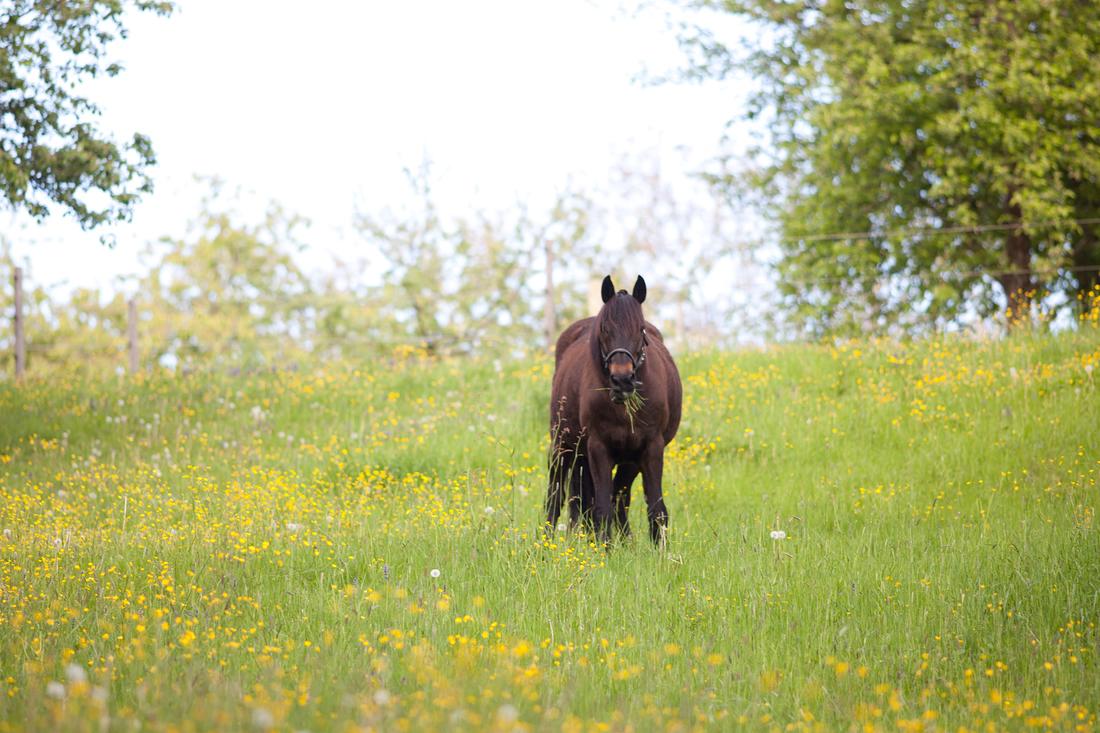I’d like to share with you recent scientific data that seems to confirm the anecdotal evidence many trimmers, including me, have observed on what comprises a healthy hoof.
When evaluating a hoof, we tend to focus on the outside appearance of the hoof capsule such as toe length and heel angle. Although these are valuable indicators, they only present part of the picture.
Research by Pete Ramey, Dr. Robert Bowker and Dr. Debra Taylor bring to light the importance of evaluating the internal structures to truly determine hoof health.
The level of development of these structures (or lack thereof) also seems to predict the chances of maintaining a sound horse over time. Let’s have a quick anatomy lesson:
Horse Hoof Anatomy

In this view of a wild horse’s hoof cut through the center of the toe, we see a beautifully developed digital cushion located just above the frog. A healthy digital cushion is comprised of dense fibro-cartilage and possesses a multitude of blood vessels to help dissipate the ground reaction forces created during a foot fall.
Together they provide protection to both the deep digital flexor tendon (DDFT) and the navicular region.
On each side of the coffin bone we find the lateral cartilages, seen in blue in the image below. They help keep the hoof healthy by allowing it to distort laterally (e.g. if one heel lands on a rock or when a horse is travelling on a circle). As the terrain or footing is often uneven, the hoof must be allowed some flexion to accommodate this.

Hoof Mechanics
Many experts now agree that horses should land heel first. Let’s examine why. If you were a 500 kg horse, would you prefer to land on your toes (i.e. the coffin bone) or land on tissues designed to absorb and dissipate energy (the frog, digital cushion, blood vessels, and lateral cartilages)?
Ever heard of the term “use it or lose it”? It applies perfectly to the back part of the hoof. As a trimmer, I have learned to evaluate the back part of the foot by palpation.
I do everything I can to get horses under my care to land heel first and will adapt my trim accordingly. Even a bad hoof can improve over time with proper stimulation.
I have found that hoof boots and pads, by restoring comfort, are crucial in getting some horses back into proper landing mechanics. Keeping the frog healthy and free from infections is another key factor, so that will be my next topic.
If you would like more in-depth information I encourage you to take a look at the links below. Watch the videos showing correct versus incorrect landing mechanics and then try to observe your horse in motion. If his hoof mechanics are incorrect, discuss ways to improve them with your trimmer.
References
- Dr. Debra Taylor of Auburn University. Is the hoof smart? Adaptability of the equine foot.
- Pete Ramey. Newly Discovered Shock Absorber in the Equine Foot.
- Digging for the truth about navicular syndrome. TheHorse.com
- Care and rehab of the equine foot, Pete Ramey and Dr. Robert Bowker, VMD, PhD, Paperback, 2007
- Robert Bowker, VMD, PhD. Physiological Trimming for a Healthy Equine Foot. Healthyhoof.com
- Hooves landing in slow motion: Rockley farm: hoof rehab in slow motion
- Hoof landing correctly in slow motion












Leave A Comment